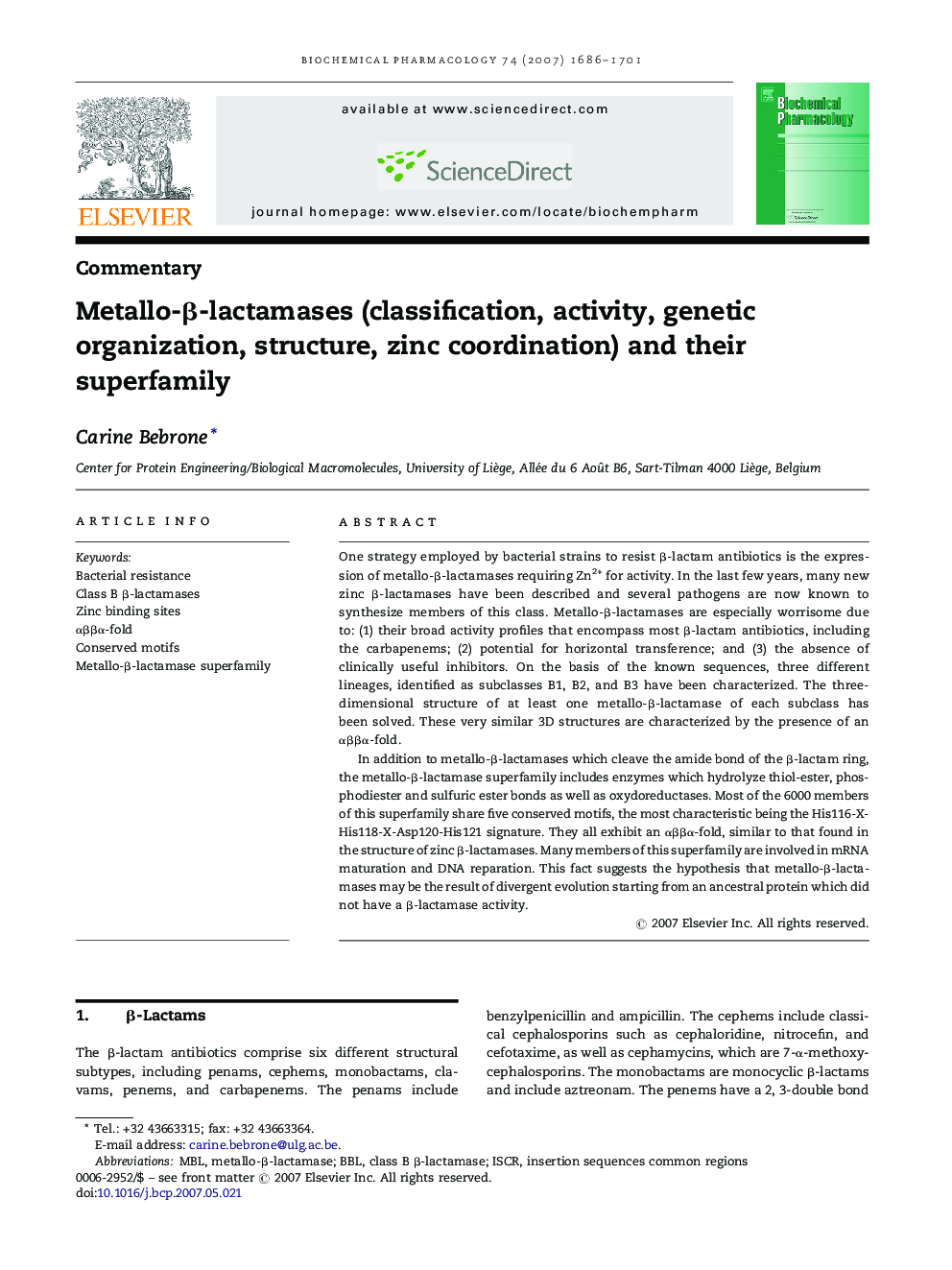| Article ID | Journal | Published Year | Pages | File Type |
|---|---|---|---|---|
| 2514428 | Biochemical Pharmacology | 2007 | 16 Pages |
One strategy employed by bacterial strains to resist β-lactam antibiotics is the expression of metallo-β-lactamases requiring Zn2+ for activity. In the last few years, many new zinc β-lactamases have been described and several pathogens are now known to synthesize members of this class. Metallo-β-lactamases are especially worrisome due to: (1) their broad activity profiles that encompass most β-lactam antibiotics, including the carbapenems; (2) potential for horizontal transference; and (3) the absence of clinically useful inhibitors. On the basis of the known sequences, three different lineages, identified as subclasses B1, B2, and B3 have been characterized. The three-dimensional structure of at least one metallo-β-lactamase of each subclass has been solved. These very similar 3D structures are characterized by the presence of an αββα-fold.In addition to metallo-β-lactamases which cleave the amide bond of the β-lactam ring, the metallo-β-lactamase superfamily includes enzymes which hydrolyze thiol-ester, phosphodiester and sulfuric ester bonds as well as oxydoreductases. Most of the 6000 members of this superfamily share five conserved motifs, the most characteristic being the His116-X-His118-X-Asp120-His121 signature. They all exhibit an αββα-fold, similar to that found in the structure of zinc β-lactamases. Many members of this superfamily are involved in mRNA maturation and DNA reparation. This fact suggests the hypothesis that metallo-β-lactamases may be the result of divergent evolution starting from an ancestral protein which did not have a β-lactamase activity.
